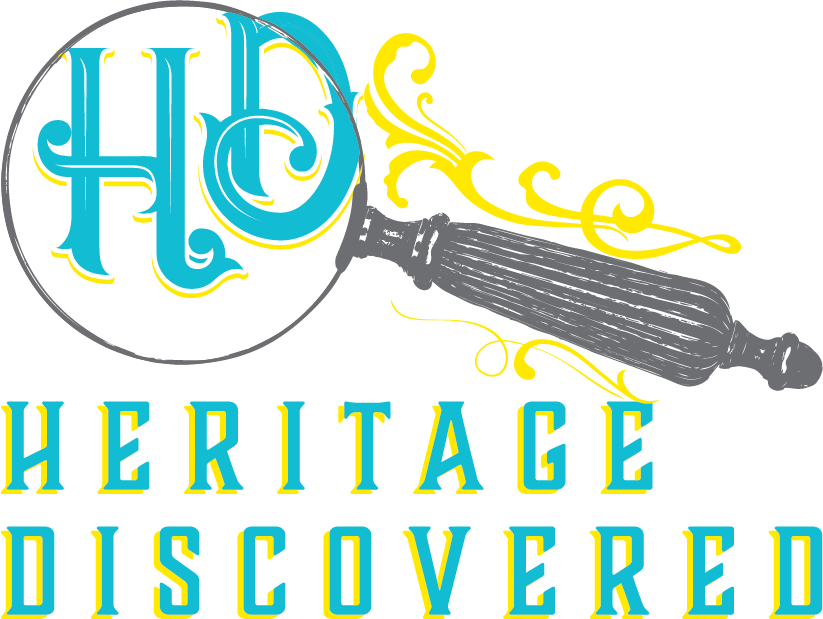How To Easily Organize Your Genealogy To Do List Into Simple Time Blocks
*This post may have affiliate links, which means I may receive commissions if you choose to purchase through links I provide (at no extra cost to you). All opinions remain my own.
It can be hard to set aside the time for research, and all the other things you have on your genealogy to do list.
Most of us don’t have hours and hours to spend on our genealogy, no matter how fun it is. And when we do sit down and focus on our family tree, we want to get a lot done at once and maximize the time.
While it may feel more productive to work in longer stretches, it's not the only way to get your family history research done. You can move forward toward making your next discovery or finishing a genealogy project by working in smaller chunks.
In this article, I’m sharing simple steps to organize genealogy to do lists into manageable action items. The trick? To break them up into how long they’ll take.
Plus, I share some ideas for genealogy projects you can add to your list as inspiration.
Related posts:
How Setting Genealogy Goals Makes You A Better Researcher
Why You Need a Genealogy Research Log
7 Tips To Help You Create A Successful Genealogy Research Plan
How to organize your genealogy to-do list into manageable tasks
With so many possibilities for not only research goals, but also staying organized, planning, and learning new skills, genealogy can quickly get overwhelming.
But it is possible to organize your projects and to do items into a manageable list.
Here are the steps to get there:
1) Brain dump everything, from big to small projects and all the little tasks that don’t fit neatly into a project. A project could be an ancestor and everything you want to discover about them, or something like planning a genealogy trip. Get all your ideas out of your head and onto paper.
2) Break down projects into smaller action steps as needed. For example, if you want to plan a genealogy road trip, you’ll need to pick a place, define your goals, set a budget, book flights, research the local sights or repositories, etc.
3) Sort all the tasks by the amount of time they’ll take: 15 minutes, 30 minutes, 1 hour, or longer.
4) Prioritize the tasks. This is optional but will help you focus on what you’re most interested in doing.
5) Schedule it into your calendar! Despite the best of intentions, it can be hard to add things to our busy lives. Blocking out time on your calendar will help you find pockets of time to keep moving forward with your research.
6) Keep track of what you’ve done, especially your big successes like finding a birth certificate. Being able to look back on all your hard work is good motivation to keep up the momentum.
Ideas of genealogy projects for your genealogy task list
Here are some ideas of activities for your task list, organized by length of time.
Remember, you can also break these down into even smaller actions. It all depends on how you want to approach them.
15 minutes or less
Read a blog post
Check out the Genie Bugs calendar of webinars and sign up for one
Back up your files
Scan a couple of documents or photos and file them
Ask a question in a Facebook group. Get help reading the writing on a document or other tips.
Reach out to a DNA match
30 minutes
Make an estate plan for what to do with your papers. Do you know which family member, if any, wants your research?
Write down a memory of a family photo or event.
Run an errors check report in your family tree software. This will show you things like a child born before a marriage, kids being born too far apart, and a mother having a kid beyond a typical age. Then make any corrections.
Request gravestone photos from volunteers on Find on Grave (and help others with their requests)
1 hour
Pick an ancestor and make a record inventory for them
Transcribe a family history interview
Clean up your locality list on your software and standardize the names
Pick one person from your Ancestry tree and go through all the hints for them.
Add citations to your sources
Teach your kids or other young family members about their family history
Longer than an hour
Visit a genealogy library or local genealogical society
Visit a cemetery and see your ancestors’ graves
Read about your ancestor’s hometown
Do a family history activity like a craft project or a time capsule
Plan a family reunion
Plan a genealogy road trip – for fun or research
Write down a family story or journal about a loved one
Read a fiction book based on the time and location of your ancestors
Cook or bake a traditional meal from your heritage
Review your earliest genealogy research. See how far you’ve come and where you can improve. What extra evidence can you gather now that you are a better researcher?
Related posts:
12 Tips For Getting Back Focus And Motivation In Your Genealogy Research
How To Build The Best File Folder System For Your Genealogy Papers
7 Simple Steps To Creating A Genealogy Timeline (And Why You Need One)
Tools for keeping track of your genealogy tasks
There are a lot of ways to keep track of your projects, from project management and note-taking software to good old pen and paper.
Some recommended ways to manage your genealogy tasks are:
Asana. This is my favorite project management tool. I use it for almost everything. You can create projects by family, theme, or whatever works for you and add the tasks. Asana lets you create sections, where you can separate tasks by the length of time. You can assign deadlines if you want.
Trello is another popular tool that uses a Kanban format. You create a board and then cards (lists) of items to do.
Evernote has been a popular genealogy tool for many years, and it’s also good for tracking projects. You can create notes for the project and/or the length of time, then add in checklists for action items.
Airtable is another favorite tool of mine and the one I use for my genealogy to do list. It’s like a spreadsheet but with many other bells and whistles that make it easy to customize for your genealogy projects.
Excel (or other spreadsheet software) is another reliable and easy way to keep track of tasks.
Paper checklists. Paper to do lists are also a solid option and give you a way to keep your task list with each family (in their folder or binder) so you have everything in one place.
Related posts:
6 Google Search Tips For Genealogy That Will Save You Hours Of Time
How and Why to Research Your Collateral Ancestors
How To Effortlessly Analyze Old Obituaries And Verify Their Clues
Final thoughts
Family history research should be fun and not overwhelming. Although it can be hard to set aside large blocks of time to work on our family trees, we can do just as much by working in shorter chunks. In fact, we may reach our goals even sooner because we can be more consistent about our research.
What projects are you working on right now and how will you break them into smaller time blocks?



